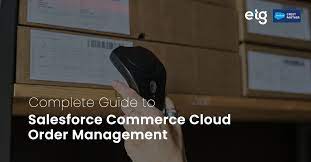Salesforce Order Management Enhancements stands out for its scalability, catering to both small startups and large enterprises by offering customization to meet specific needs. Its adaptability facilitates seamless integration with other systems, presenting a comprehensive solution for e-commerce requirements.
Explore the latest features in Salesforce Order Management and Lightning B2B Commerce, including process exception management, return merchandise authorizations, and various enhancements.
Salesforce Order Management now provides tools to identify and address process exceptions during order processing interruptions. The addition of a new return order data model aids in managing return merchandise authorizations. Further updates include improved order summary flows, customization of payment methods, and the creation of order summaries with custom numbers and statuses.
Enhancements to Lightning B2B Commerce introduce new components for deliveries and order summaries, improved searchability, an integration dashboard, and the Price Book Workspace. The integration dashboard consolidates management of integrations, providing a centralized overview.
Order Management serves as the central hub for handling the entire order lifecycle, covering order capture, fulfillment, shipping, payment processing, and service. Customers can submit orders through any commerce channel, and merchants can efficiently manage fulfillment, shipping, invoicing, and service using integrated and customizable workflows.
Salesforce Mobile App allows easy access to data on the go, although certain console features are not available. Order Management offers various resources, including preconfigured permission sets, Salesforce Payments integration for seamless payment processing, and extensive documentation for setup, administration, and extension.
Salesforce Order Management utilizes Einstein Generative AI to enhance the overall experience, providing smarter service to customers. High-scale orders are supported on Hyperforce, offering increased capacity for order processing.
For post-implementation monitoring and optimization, tracking key performance indicators (KPIs) such as order processing time, customer satisfaction, and inventory levels is crucial. Salesforce analytics aid in making data-driven improvements, and troubleshooting tools are available for resolving common issues like order discrepancies and payment failures.
The Salesforce Order Management Implementation Guide outlines steps from initial setup and data migration to workflow customization, payment, and shipping integrations. Real-world case studies demonstrate successful implementations, showcasing the platform’s benefits, scalability, and advanced features.
The retirement of Commerce Cloud Order Management is announced, with Salesforce Order Management positioned as the new product built within the Salesforce core platform. For further details or assistance, users are advised to contact their account manager or refer to Salesforce Order Management Help documentation.













